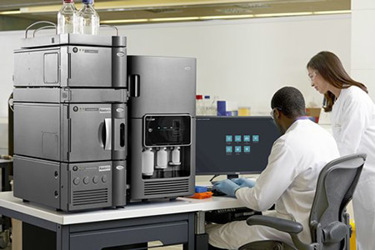Improving Recovery And Quantitation Of Oligonucleotide Impurities Using MaxPeak HPS Technology
By Brooke M. Koshel, Robert E. Birdsall, and Ying Qing Yu

Nucleic acid therapeutics continue to generate interest as new modalities are explored and brought to market. This includes synthetic oligonucleotides, which are synthesized through a series of coupling reactions that link one nucleotide to the next in a growing chain. Due to the nature of chemical synthesis, impurity types are often predictable, but the impurity profile becomes more complex as the length of the oligonucleotide increases. Separation and purification of the analyte of interest from these impurities is critical to development and manufacturing activities but is not without its challenges.
Ion-pair reversed-phase chromatography is a commonly used technique for the separation of synthetic oligonucleotide impurities. Analysis of oligonucleotides is notoriously difficult due to their high affinity for metallic surfaces when using traditional ion-pairing method conditions. MaxPeak High Performance Surfaces (HPS) Technology was developed specifically to reduce variability in the analysis of metal-sensitive analytes by providing an organic/inorganic barrier between the metal surface and the analyte. ACQUITY Premier Columns and the ACQUITY Premier System were designed with MaxPeak HPS Technology and together form the ACQUITY Premier Solution. This work evaluates the ACQUITY Premier Solution compared to conventional stainless-steel columns and LC systems having a metal-containing flow path for UV-based analysis of oligonucleotides to address the challenges associated with non-specific adsorption. The ACQUITY Premier Solution provides greater sensitivity and recovery leading to increased reproducibility in quantitation. Ultimately, greater confidence in results can be achieved while bypassing the need for additional time spent conditioning or passivating surfaces.
Get unlimited access to:
Enter your credentials below to log in. Not yet a member of Cell & Gene? Subscribe today.
